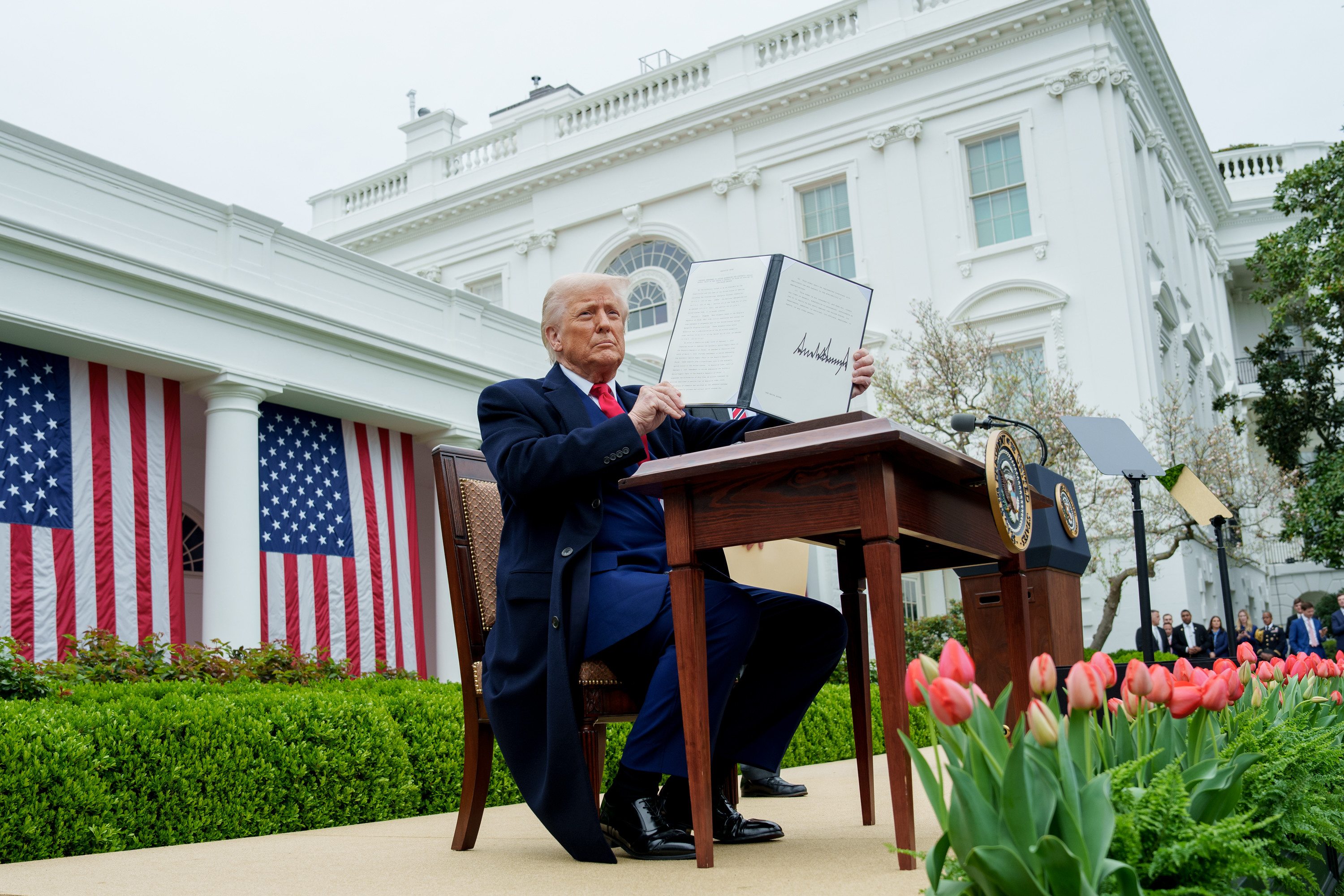Time to Pivot? Thoughts on Jesner v. Arab Bank
Now that liability for corporations (foreign ones, at least) under the Alien Tort Statute (ATS) is off the table, the recriminations can begin.
Tuesday’s Supreme Court decision in Jesner v. Arab Bank was genuinely shocking. The case involved victims of terrorism and the plaintiffs sought a tort remedy against alleged financial supporters of that wrong. Few believed that the conservative justices, whatever their corporate-friendly jurisprudence across the board, would foreclose a remedy on these facts. Yet they did.
Published by The Lawfare Institute
in Cooperation With

Now that liability for corporations (foreign ones, at least) under the Alien Tort Statute (ATS) is off the table, the recriminations can begin.
Tuesday’s Supreme Court decision in Jesner v. Arab Bank was genuinely shocking. The case involved victims of terrorism and the plaintiffs sought a tort remedy against alleged financial supporters of that wrong. Few believed that the conservative justices, whatever their corporate-friendly jurisprudence across the board, would foreclose a remedy on these facts. Yet they did.
More than in prior ATS cases, the conservative justices splintered. Justice Samuel Alito and especially new Justice Neil Gorsuch announced quite radical views that augmented the more limited skepticism offered by Justice Anthony Kennedy, who penned the plurality opinion.
Among other things, Jesner is vindication for Judge José Cabranes of the U.S. Court of Appeals for the Second Circuit. He prevailed a few years ago in a divided bench on the Second Circuit, in a notorious brawl with Judge Pierre Leval, ruling that the statute could not cover corporate defendants. But as all the other circuits that took up the question went the other way, Cabranes began looking increasingly lonely. Kennedy, however, repeated much of Cabranes’s reasoning, holding that it is doubtful whether international legal authority (such as the jurisprudence of the Nuremberg trials) licenses corporate liability, and therefore whether the statute allows it. (Likewise, Justice Sonia Sotomayor in dissent repeated Leval’s response to Cabranes that this is no way to think about the case at hand or about international law in general). For Kennedy, judges should not do the work of making law, especially when political branches are better positioned to decide how to proceed when it comes to foreign affairs.
While law professors will engage in the regular practice of Supreme Court Kremlinology for some time, and many activists will understandably try once again to breathe new life into the statute’s apparently fallen corpse, the most important debate concerns what lesson to draw from the terrible, horrible, no good, very bad day for the human rights movement that Jesner represented. Perhaps the lesson is that the movement must pivot in the ruins.
The lifecycle of the ATS tracks almost exactly the lifecycle of the human rights movement in the United States. Suddenly rediscovered after more than a century just as American human rights activism was born in the 1970s, in the Second Circuit’s celebrated Filartiga v. Peña-Irala case, the ATS was then put to unexpected new uses that its drafters never intended. It provided an American venue for victims of the global wrongs stigmatized by the new movement—and that America’s government now had policies opposing. Heady days followed, in tune with rising ambition and optimism for the human rights movement.
Then disaster struck on both tracks. In the last fifteen years since it finally reached the Supreme Court, the strategy that crystallized around the statute has suffered a stunning series of reversals. To date, indeed, no plaintiff under the ATS has ever won in the Supreme Court. Sosa v. Alvarez-Machain (2004) left open the door to liability under the statute only in narrow circumstances; the biggest defeat, Kiobel v. Royal Dutch Petroleum (2013), raised the issue of corporate liability under the statute only to be resolved by foreclosing all liability except when the tort violations “touch and concern” U.S. “territory.” Now Jesner holds that foreign corporations per se cannot be liable (and perhaps, depending on how you interpret the logic of the opinion and read some of the dicta, corporations in general).
Correspondingly, the decision comes amid dark days for the human rights movement. This cover of month’s Foreign Policy magazine pictures the dove of human rights shot through with the arrows of reality. The same morning that the Jesner decision came down, the New York Times featured an op-ed entitled “How the Human Rights Movement Failed.”
I wrote that op-ed. Unlike Gorsuch, who relied on conservative scholars appealing to history to constrict the reach of the statute even more radically than Kennedy would allow, I have no problem with putting old law to new ends. But I also think that yesterday’s reversal for the ATS strategy coincides with a broader reassessment of the human rights movement, especially as it has taken shape in this country.
It is a specific movement, whatever its appeal to timeless values—which means that it has made specific choices concerning what to care about and what strategies to pursue. For Americans, the movement seeks justice for only a limited subset of wrongs. In privileging the ATS, in part to convince judges that they could prudently join in with the movement’s work, human rights activists narrowed concern to focus only on the most outrageous global disasters—especially, since the 1990s and the rise of humanitarian intervention and international criminal law, the most glaring kinds of atrocity. While human rights law has been proven to work best when it allows people around the globe to take more ownership of their own local politics, we still don’t know how much difference was ever made by the ATS’s promise of compensation for terrible crimes, even in the cases in which compensation was paid. We do know that the focus on the ATS was a litigation strategy that costs millions of dollars and hours. It provided a dubious outlet for law students who wanted to save the world in clinics without abandoning preparation for mainstream legal practice within the federal court system. Meanwhile, a broader understanding of human rights ideals—connecting human rights to economic justice and grassroots activism—failed to become comparably prominent.
I tried out this argument when Kiobel came down, and now it seems even more appropriate.
And as I argued then, humbling defeat could focus the mind on whether, all things considered, the centrality of the ATS had ever led to the most persuasive campaign possible:
Far better would be to move on to other ways of protecting human rights -- less centered on courts, less rushed for a quick fix, less concerned with spectacular wrongs to individuals and more with structural evils, and less disconnected from social movements abroad. And there are also better ways to protect humanity in the age of powerful multinational corporations.
Of course, many ways of framing and protecting human rights can coexist, and it is not as if the ATS had to die to allow other ideals and strategies to live. But it is also true that we seem to be living through a moment of potential transition for the human rights movement, when it can revisit its focus and priorities. Jesner is best interpreted as part of that moment.
In a new book, “Not Enough: Human Rights in an Unequal World,” I tell a story about how the whole notion of human rights once intersected far more with that of welfare states promising material fairness for majorities, and was transformed—in the same era in which the ATS was given new life—into a companion of the rise of increasingly inequality in most nations, and the rule of unaccountable elites now stoking populist rage.
Jesner raises many legal questions, and I don’t purport to settle them here. But it also raises the political question of whether partisans of an American human rights movement that made ATS central through its rise and fall should look out at the world and pivot beyond their familiar priorities.





